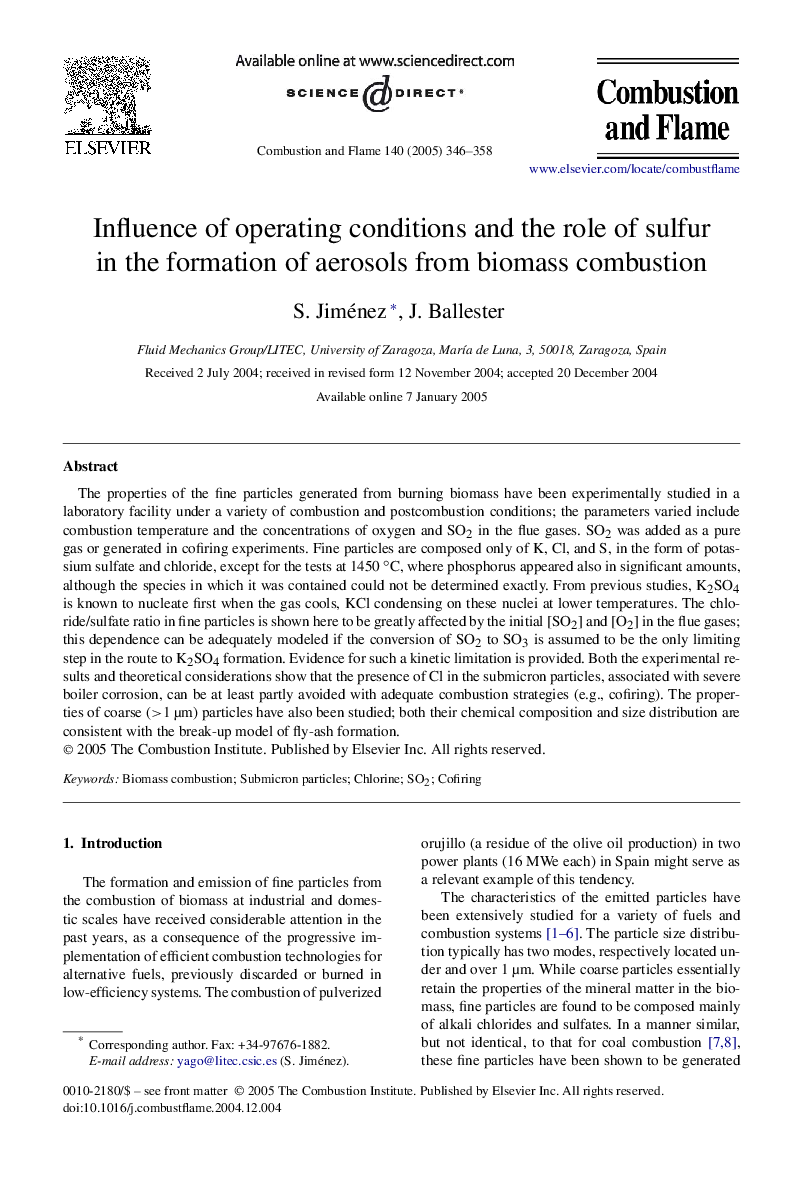| Article ID | Journal | Published Year | Pages | File Type |
|---|---|---|---|---|
| 9624538 | Combustion and Flame | 2005 | 13 Pages |
Abstract
The properties of the fine particles generated from burning biomass have been experimentally studied in a laboratory facility under a variety of combustion and postcombustion conditions; the parameters varied include combustion temperature and the concentrations of oxygen and SO2 in the flue gases. SO2 was added as a pure gas or generated in cofiring experiments. Fine particles are composed only of K, Cl, and S, in the form of potassium sulfate and chloride, except for the tests at 1450â°C, where phosphorus appeared also in significant amounts, although the species in which it was contained could not be determined exactly. From previous studies, K2SO4 is known to nucleate first when the gas cools, KCl condensing on these nuclei at lower temperatures. The chloride/sulfate ratio in fine particles is shown here to be greatly affected by the initial [SO2] and [O2] in the flue gases; this dependence can be adequately modeled if the conversion of SO2 to SO3 is assumed to be the only limiting step in the route to K2SO4 formation. Evidence for such a kinetic limitation is provided. Both the experimental results and theoretical considerations show that the presence of Cl in the submicron particles, associated with severe boiler corrosion, can be at least partly avoided with adequate combustion strategies (e.g., cofiring). The properties of coarse (>1 μm) particles have also been studied; both their chemical composition and size distribution are consistent with the break-up model of fly-ash formation.
Related Topics
Physical Sciences and Engineering
Chemical Engineering
Chemical Engineering (General)
Authors
S. Jiménez, J. Ballester,
